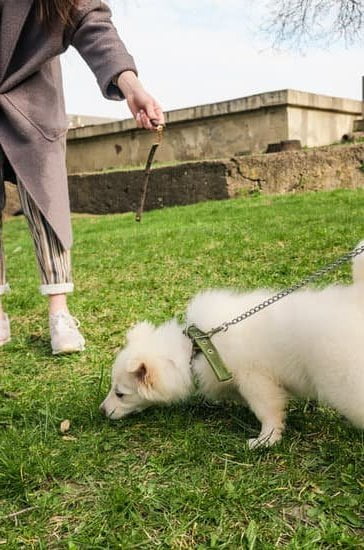Are you struggling to communicate effectively with your furry friend? Understanding how to talk dog through smart training techniques is crucial for building a strong bond and achieving successful results in dog training. Clear communication plays a vital role in establishing trust, promoting positive behavior, and strengthening the connection between you and your canine companion.
In this article, we will explore the various elements of effective communication in dog training, including verbal and non-verbal cues, decoding canine body language and signals, and the power of positive reinforcement. By honing your communication skills and implementing smart training techniques, you can overcome common challenges and tailor your approach to meet the unique needs of your dog.
Building a strong bond with your pet is at the heart of successful communication in dog training. Through understanding their language and providing constructive guidance, you can enhance your relationship while achieving desired behavior. Join us as we delve into the art of talking dog through smart training techniques, offering real-life examples and practical insights to help you become a skilled communicator in your furry friend’s world.
Establishing Clear Communication
When it comes to effective dog training, establishing clear communication is essential. Verbal and non-verbal cues play a crucial role in conveying your expectations to your furry friend. Verbal cues such as commands like “sit,” “stay,” or “come” are important for giving direct instructions to your dog. It’s important to use consistent and clear verbal cues to avoid confusion.
In addition to verbal cues, non-verbal communication also plays a significant role in dog training. Dogs are highly attuned to body language, so it’s important to be mindful of the signals you’re sending. For example, using hand gestures along with verbal commands can help reinforce the message you’re trying to convey. Additionally, paying attention to your own body language can help you understand how your dog may be reacting to your commands.
Understanding the balance between verbal and non-verbal cues is key in establishing clear communication with your dog. By using a combination of both types of communication, you can ensure that your dog understands what is expected of them during training sessions. This will ultimately lead to more successful and effective training outcomes.
| Verbal Cues | Non-Verbal Cues |
|---|---|
| Commands like “sit,” “stay,” or “come” | Hand gestures |
| Consistent and clear instructions | Attention to body language |
Decoding Canine Communication
Understanding your dog’s body language and signals is crucial for effective communication and successful training. Dogs use a variety of physical cues to express their emotions, desires, and needs, and as a responsible pet owner, it’s essential to learn how to interpret these signals accurately.
One of the most common body language cues in dogs is tail wagging. While many people believe that a wagging tail always means a happy dog, this is not necessarily true. The speed, height, and direction of the wag can indicate different emotions such as excitement, fear, or agitation. It’s important to pay attention to the context in which the tail wagging occurs to understand what your dog is trying to communicate.
In addition to tail wagging, other key body language cues include ear position, eye contact, posture, and vocalizations. By observing your dog’s body language in different situations, you can gain valuable insight into their emotional state and tailor your training approach accordingly. This level of understanding will strengthen the bond between you and your furry friend while making training more effective and enjoyable for both of you.
| Body Language Cue | Interpretation |
|---|---|
| Tail Wagging | Can indicate various emotions such as excitement, fear, or agitation. |
| Ear Position | Forward ears often indicate alertness or engagement while flattened ears can signal fear or submission. |
| Eye Contact | Direct eye contact may convey confidence or assertiveness, while avoiding eye contact can signal submissiveness or anxiety. |
Building a Strong Bond
Quality Time Together
Spending quality time with your dog is crucial for building a strong bond. Whether it’s going for walks, engaging in playtime, or simply cuddling on the couch, the more time you invest in being together, the stronger your bond will become. Engaging in activities that your dog enjoys will show them that you care about their needs and happiness.
Consistency and Routine
Dogs thrive on routine and consistency, so establishing a predictable daily routine can help strengthen the bond between you and your pet. Regular mealtimes, exercise sessions, and consistent rules and expectations will make your dog feel secure and confident in their environment.
Positive Reinforcement
Using positive reinforcement techniques during training not only helps improve communication but also builds trust and strengthens the bond between you and your dog. Rewarding good behavior with treats, praise, or playtime encourages your dog to repeat those behaviors, leading to a better understanding of what is expected from them.
By focusing on these key aspects of building a strong bond with your dog, you’ll create a solid foundation for effective communication and successful training. Taking the time to understand your dog’s needs, preferences, and unique personality will enable you to tailor your communication approach to best suit their individual requirements.
The Power of Positive Reinforcement
Positive reinforcement is a powerful tool in dog training and can greatly improve communication between you and your furry friend. By using smart training techniques based on positive reinforcement, you can effectively communicate with your dog and build a strong bond. Here are some key techniques to incorporate into your training:
- Use of rewards: One of the most effective ways to communicate with your dog is by using rewards such as treats, toys, or praise. When your dog exhibits the desired behavior, rewarding them reinforces that behavior and makes it more likely to be repeated.
- Clicker training: Clicker training is a method that uses a clicker as a signal to mark the moment when your dog performs a desired behavior. This helps in clearly communicating to your dog what specific action led to the reward.
- Consistency: Consistency in applying positive reinforcement is crucial for effective communication. Make sure everyone in the household is on the same page when it comes to rewarding good behavior.
By incorporating these smart training techniques into your dog’s training regimen, you can effectively communicate with them and create an environment that fosters learning and understanding.
It’s important to remember that every dog is unique and may respond differently to various forms of positive reinforcement. As a pet owner, it’s essential to pay attention to how your dog responds to different rewards and adjust accordingly. Gradually, through consistent use of positive reinforcement and smart training techniques, you’ll find that communication with your furry friend becomes easier and more effective.
Overcoming Communication Barriers
Effective communication with your dog is crucial for successful training, but it’s not always easy. Many dog owners face common challenges when trying to communicate with their pets during training sessions. Understanding these barriers and knowing how to overcome them is essential for achieving the desired results. Here are some common challenges in dog training and strategies for addressing them:
- Distractions: Dogs can easily be distracted by their surroundings, making it difficult to get their attention during training. One way to address this challenge is to find a quiet, familiar environment for training sessions. Minimizing external distractions can help your dog focus on the task at hand.
- Conflicting Signals: Sometimes, dog owners may unintentionally send mixed signals to their pets, leading to confusion. It’s important to be consistent with verbal and non-verbal cues to avoid any confusion. Using clear and consistent commands will help your dog understand what is expected of them.
- Fear and Anxiety: Some dogs may exhibit fear or anxiety during training, which can hinder effective communication. Creating a safe and positive environment for your dog, along with using gentle and patient training methods, can help alleviate fear and anxiety.
By understanding these common challenges in dog training, you can take proactive steps to address them and improve communication with your pet.
The Importance of Patience
Patience is key when it comes to overcoming communication barriers in dog training. It’s essential to remember that every dog learns at their own pace, and some may require more time and patience than others. Keeping calm and being patient during training sessions will help build trust and strengthen the bond between you and your furry friend.
Seeking Professional Help
If you’re facing persistent challenges in communicating with your dog during training, seeking the assistance of a professional dog trainer may be beneficial. A qualified trainer can provide personalized guidance tailored to your dog’s specific needs, helping you overcome communication barriers more effectively.
Regardless of the challenges encountered during dog training, there are always ways to address them through patience, consistency, and understanding – all essential components of effective communication with your furry companion.
Fine-Tuning Communication
Understanding Individual Learning Styles
Just like humans, dogs have their own unique learning styles and preferences. Some may respond well to food rewards, while others may be more motivated by play or praise. It’s important to observe your dog’s behavior and see what type of reinforcement they respond to best. By understanding their individual learning style, you can tailor your training methods to better communicate with them.
Adapting to Personality Traits
Every dog has its own personality traits that can impact their responsiveness to training. Some dogs may be more confident and outgoing, making them quick learners, while others may be shy or nervous, requiring a more gentle approach. By recognizing your dog’s personality traits, you can adjust your training techniques to effectively communicate with them and build their confidence.
Considering Physical Limitations
Physical limitations such as age, health conditions, or even breed characteristics can also affect how a dog responds to training. For example, older dogs may have mobility issues that require a different approach to training compared to younger, more energetic ones. Similarly, certain breeds may have specific instincts or tendencies that need to be taken into account when communicating through training methods. Understanding these physical limitations is essential in tailoring training methods for effective communication.
By fine-tuning communication and tailoring training methods to your dog’s unique needs, you can create a stronger bond and achieve better results in your dog training efforts. Understanding individual learning styles, adapting to personality traits, and considering physical limitations are key factors in mastering the art of talking dog through smart training techniques.
Putting It Into Practice
Effective communication with your dog is essential for successful training, and putting smart training techniques into practice can make all the difference. By using verbal and non-verbal cues, decoding canine communication, and establishing a strong bond with your furry friend, you can ensure that your training sessions are productive and fulfilling for both you and your dog.
One real-life example of effective communication in dog training is using positive reinforcement to modify behavior. Rather than scolding or punishing your dog for unwanted behaviors, such as jumping on visitors or pulling on the leash, you can use treats, praise, or toys to reward good behavior.
For instance, when your dog sits calmly when meeting new people or walks politely on a loose leash, you can provide a high-value treat or verbal praise to reinforce these desirable actions. This type of smart training not only communicates to your dog what you expect from them but also strengthens the bond between you by creating a positive association with obedience.
Another example of effective communication in dog training is tailoring your methods to meet your dog’s unique needs. Just as every person is different, every dog has their own personality, temperament, and learning style. Understanding how your individual dog responds to training can help you adjust your communication approach accordingly.
For instance, some dogs may be highly motivated by food rewards, while others may be more motivated by playtime or affection. By recognizing and adapting to these differences, you can effectively communicate with your dog in a way that resonates with them.
In addition to tailoring your training approach, it’s important to be patient and consistent in your communication with your dog. Dogs thrive on routine and clear expectations, so maintaining consistency in verbal commands, hand signals, and expectations will help them understand what is being asked of them. Consistent communication also fosters trust between you and your dog, making it easier for them to learn new behaviors and respond positively to training cues.
Conclusion
In conclusion, effective communication is the foundation of successful dog training, and mastering the art of talking to your dog through smart training techniques is essential for building a strong bond with your furry companion. Establishing clear communication through both verbal and non-verbal cues is crucial in ensuring that your dog understands what you are trying to convey.
Decoding your dog’s body language and signals will also enable you to better understand their needs and emotions, further enhancing the bond between you.
Utilizing smart training techniques, such as positive reinforcement, is a powerful way to communicate with your dog and encourage desired behaviors. By rewarding good behavior, you can effectively communicate to your dog what they are doing right, making it more likely for them to repeat those behaviors in the future. Additionally, overcoming common challenges in dog training, such as addressing fear or anxiety, requires smart training methods tailored to your dog’s unique needs.
To truly master the art of talking dog through smart training techniques, it is important to put these principles into practice with consistency and patience. Real-life examples can provide valuable insight into how effective communication can lead to a harmonious relationship between you and your dog. By applying these strategies and continuously fine-tuning your communication with your four-legged friend, you will be well on your way to becoming a skilled communicator and trainer for your beloved pet.

Welcome to the blog! I am a professional dog trainer and have been working with dogs for many years. In this blog, I will be discussing various topics related to dog training, including tips, tricks, and advice. I hope you find this information helpful and informative. Thanks for reading!





